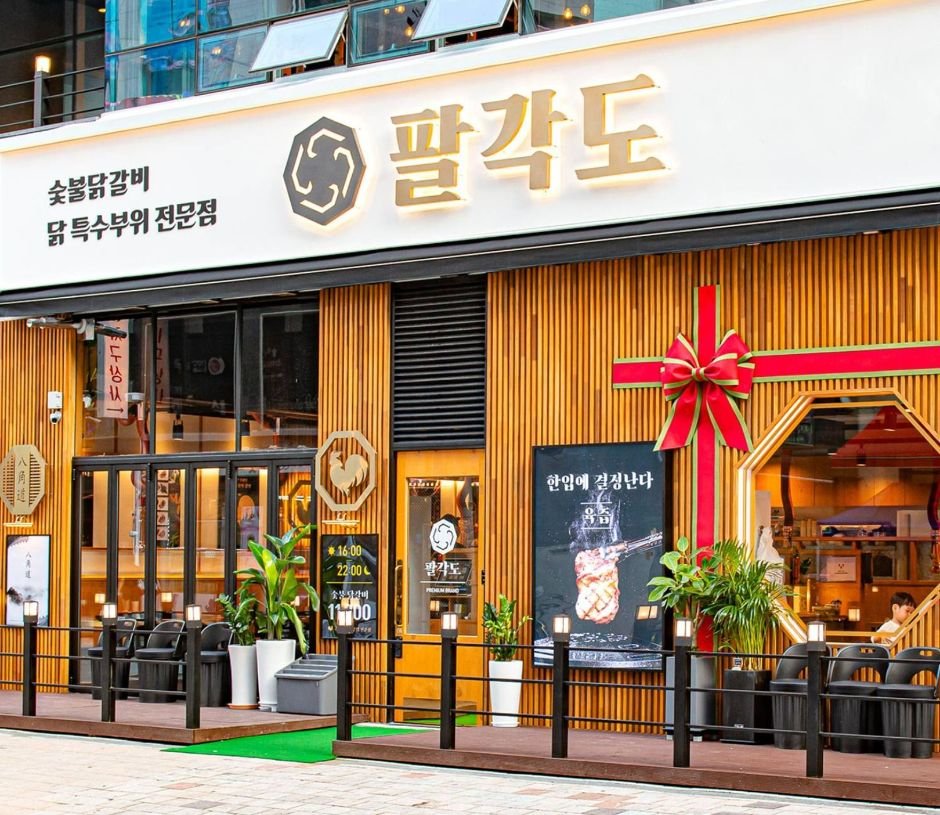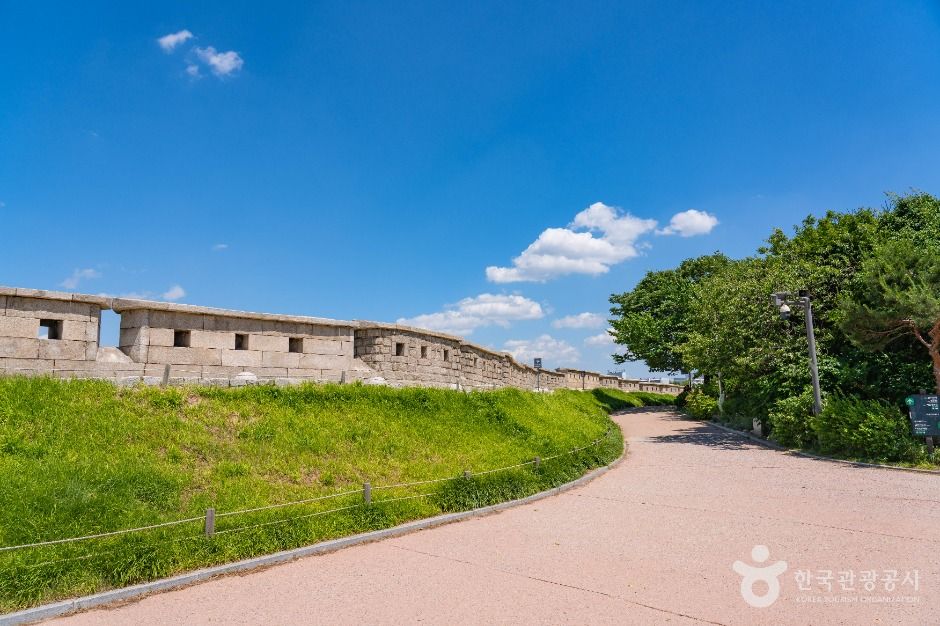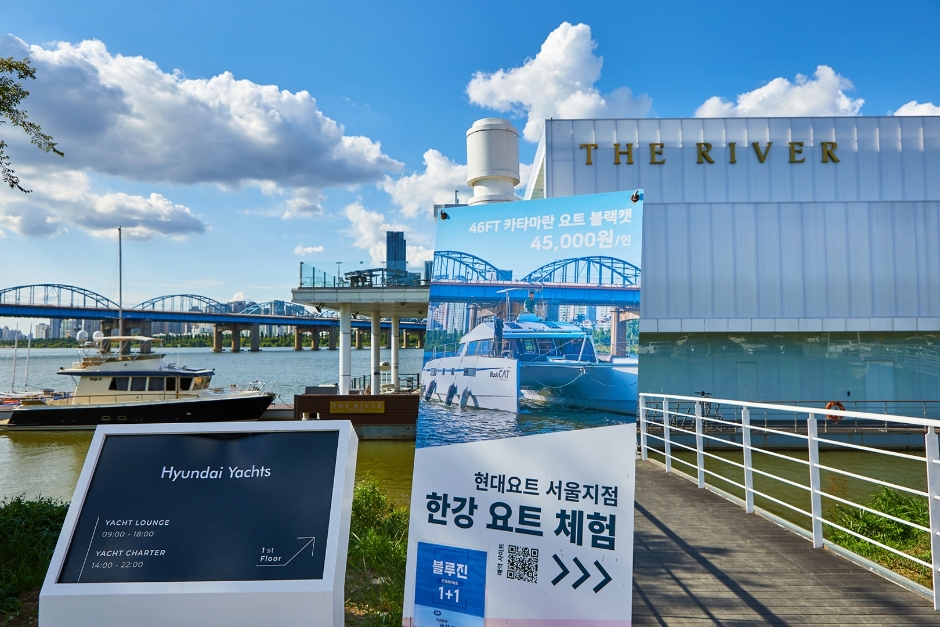Palgakdo Main Branch (팔각도 본점)
6.9Km 2025-01-23
643 Gyeongin-ro, Guro-gu, Seoul
Palgakdo is a restaurant specializing in charcoal-grilled chicken cuts. The chicken is cooked over charcoal, making it tender and juicy. Visitors can try various chicken parts paired with delicious side dishes and sauces. The store’s unique interior, inspired by a pentagon theme, makes it a great place for dates and group gatherings.
CheongKwanJang - Hannam Branch [Tax Refund Shop] (정관장 한남)
6.9Km 2024-04-17
#118, 60, Hannam-daero, Yongsan-gu, Seoul
-
Naksan Park (낙산공원)
6.9Km 2025-10-23
41 Naksan-gil, Jongno-gu, Seoul
+82-2-743-7985
Naksan Mountain (alt. 125 meters) is one of the four inner mountains of Seoul, and can be accessed by following the road leading to the mountain entrance from Daehangno and Dongdaemun. It was also called Naktasan Mountain, which can be translated to Camel Mountain, because the terrain resembled a camel's back. It also had another name, Taraksan Mountain, “tarak” meaning fermented milk, because there was a royal ranch in the area that supplied milk to the palace. After the 1960s, the original appearance of Naksan Mountain disappeared due to apartments and dense housing, and the Seoul Metropolitan Government established a restoration plan. As part of this plan, a park project was carried out, and it opened Naksan Park in July 2002. Currently, Naksan Park has established itself as a resting place for citizens to feel the beautiful atmosphere of Hanyangdoseong, or the Seoul City Wall, and green forests. It has gained much popularity as a place for seeing the most beautiful night view in Seoul.
Olive Young - Hannam Ogeori Branch [Tax Refund Shop] (올리브영 한남오거리)
6.9Km 2024-04-16
1F, 65-1, Dokseodang-ro, Yongsan-gu, Seoul
-
Leather Craft Shop (손놀림공방)
6.9Km 2025-10-30
19-1 Naksanseonggwakseo 1-gil, Jongno-gu, Seoul
The leather workshop featured in the drama 'Boyfriend'
It is a leather workshop that appeared in the scene where Cha Soohyeon (Song Hyekyo) and Kim Jinhyeok (Park Bogum) reunite in the drama 'Boyfriend'. It is run by leather craft artist Kim Yeongae and is known for its many cute items. You can experience making leather knotted string bracelets and rings at a low cost.
Hyundai Yacht Seoul Branch (현대요트 서울지점)
6.9Km 2024-01-04
350 Dongjak-daero, Seocho-gu, Seoul
Hyundai Yacht Seoul Branch is where visitors can enjoy water sports such as yachting, dinghy yachts (small sail yachts for one to three people without engines and cabins), and kayaking on the Hangang River. It is located in “The River” in Banpo Hangang Park. Luxury yachts, named Black Cat and Blue Jin, are popular with families, while those who enjoy thrilling activities prefer dinghy yachts and kayaks. Visitors can enjoy an incredible sunset on the water as the Hangang River and Seoul's cityscape create an amazing view.
Moggoji [Korea Quality]모꼬지[한국관광 품질인증]
6.9Km 2023-08-31
13-6, Hyehwa-ro 16-gil, Jongno-gu, Seoul
+82-10-9389-2837
Moggoji is a hanok guesthouse in Hyehwa-dong, Daehak-ro, Jongno-gu, Seoul. Located just 10-minutes' walk from Hansung University Subway Station, it’s convenient for public transportation. There are four guestrooms, all equipped with air conditioning. Nearby are many must-visit Seoul attractions, including fashionable Daehangno, Changgyeonggung Palace, and Cheonggyecheon Stream.
Kwangjuyo - Hannam Branch [Tax Refund Shop] (광주요 한남)
6.9Km 2024-06-27
28, Hannam-daero 20-gil, Yongsan-gu, Seoul
-
Onnuri Pharmacy - Jongno Branch [Tax Refund Shop] (온누리약국 종로)
6.9Km 2024-04-19
1F, 293, Jong-ro, Jongno-gu, Seoul
-

![CheongKwanJang - Hannam Branch [Tax Refund Shop] (정관장 한남)](http://tong.visitkorea.or.kr/cms/resource/34/2888134_image2_1.jpg)

![Olive Young - Hannam Ogeori Branch [Tax Refund Shop] (올리브영 한남오거리)](http://tong.visitkorea.or.kr/cms/resource/48/2889448_image2_1.jpg)



![Moggoji [Korea Quality]모꼬지[한국관광 품질인증]](http://tong.visitkorea.or.kr/cms/resource/05/2991305_image2_1.jpg)
![Kwangjuyo - Hannam Branch [Tax Refund Shop] (광주요 한남)](http://tong.visitkorea.or.kr/cms/resource/71/3314171_image2_1.jpg)
![Onnuri Pharmacy - Jongno Branch [Tax Refund Shop] (온누리약국 종로)](http://tong.visitkorea.or.kr/cms/resource/89/2878189_image2_1.jpg)
 English
English
 한국어
한국어 日本語
日本語 中文(简体)
中文(简体) Deutsch
Deutsch Français
Français Español
Español Русский
Русский